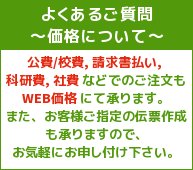The Weather Observer's Handbook, 2 Revised edition
◆JpGU2025 セール開催中!:2025年6月30日(月)ご注文分まで
※上記表示の販売価格は割引適用後の価格です 出版済み 3-5週間でお届けいたします。 気象観測者のためのハンドブック 第2版 Author: Burt, Stephen (Fellow of the Royal Meteorological Society) Publisher: Cambridge University Press ISBN: 9781009260589 Cover: PAPERBACK Date: 2024年04月 こちらの商品は学校・法人様向け(機関契約)のオンラインブック版がございます。 オンラインブックの価格、納期につきましては弊社営業員または当ECサイトよりお問い合わせください。  DESCRIPTION 更新されたばかりのこのハンドブックは、最新の機器と自動気象観測装置に重点を置きながら、気象観測実施のあらゆる側面について、包括的で実用的な独立した手引きを提供します。初めての気象計器を選ぶアマチュア観測者にも、最新のガイドラインを探しているプロの観測者にも、最適な一冊です。 This handbook provides a comprehensive, practical, and independent guide to all aspects of making weather observations. The second edition has been fully updated throughout with new material, new instruments and technologies, and the latest reference and research materials. Traditional and modern weather instruments are covered, including how best to choose and to site a weather station, how to get the best out of your equipment, how to store and analyse your records and how to share your observations. The book's emphasis is on modern electronic instruments and automatic weather stations. It provides advice on replacing 'traditional' mercury-based thermometers and barometers with modern digital sensors, following implementation of the UN Minamata Convention outlawing mercury in the environment. The Weather Observer's Handbook will again prove to be an invaluable resource for both amateur observers choosing their first weather instruments and professional observers looking for a comprehensive and up-to-date guide. * This second edition has been fully updated throughout with new material, new instruments and technologies, and the latest reference and research materials * Updated to reflect the progressive withdrawal of mercury-based meteorological instrumentation arising from the UN Minamata Convention, presenting the best methods for their replacement with modern digital sensors * Follows the most up-to-date guidelines set out by the World Meteorological Organization, including full details of site classification for air temperature, precipitation, wind speed and direction, and sunshine and solar radiation measurements TABLE OF CONTENTS Part I. The Basics: 1. Why measure the weather? 2. Choosing a weather station 3. Buying a weather station Part II. Measuring the Weather: 4. Site and exposure - the basics 5. Measuring the temperature of the air 6. Measuring precipitation 7. Measuring atmospheric pressure 8. Measuring humidity 9. Measuring wind speed and direction 10. Measuring grass and earth temperatures 11. Measuring sunshine and solar radiation 12. Observing hours and time standards 13. Aws data flows, display and storage 14. Non-instrumental weather observing 15. Calibration 16. Metadata - what is it, and why is it important? Part III. Making the Most of Your Observations: 17. Collecting and storing data 18. Making the data avalanche work for you 19. Sharing your observations 20. Summary and getting started Appendix 1: Metrology and meteorology: an instrument theory primer Appendix 2: Recommended products Appendix 3: Useful sources Appendix 4: Mercury-based legacy thermometers and barometers Appendix 5: Useful functions Appendix 6: Unit conversions References Further reading Index.

|
||||||||||||||||||||||||||||||||||||||||||||||||
























